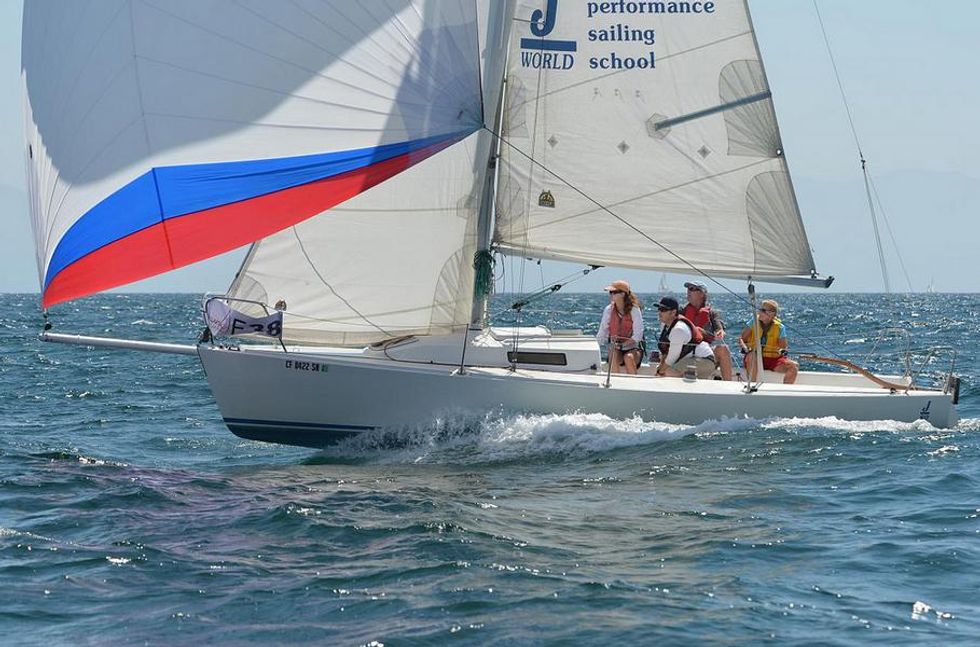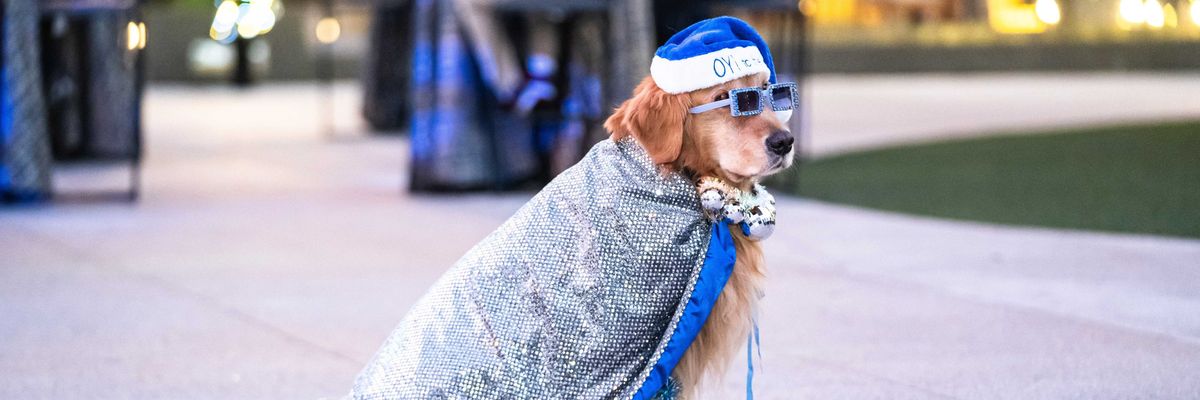Someday, my husband Matt and I are going to sail around the world. Or so we’ve been saying since Fourth of July last year when he became inspired after reading the book Adrift.
It’s the story of the only man known to survive alone at sea for over a month (76 days to be exact). Never mind that his boat sank. When Matt closed the book at our favorite campsite in the Sierra, he said, “We should buy a boat!”
We’ve always been land people. Backcountry people. Van travel was everything. But by the end of that weekend, we were sailing around the world and allocating five years to it. We decided it’ll be just like camping, but at sea.
We had been on sailboats before—you know, the sexy catamarans that cruise the Bay at sunset while you sip Champagne on the trampoline—but we had never sailed one ourselves. We spent the next year reading stories of other people’s journeys around the world, learning to make tiki drinks (when in Rome!), and mapping our dream routes. When my husband quite seriously suggested we sell our Oakland home to buy a boat, I had to buy some time, so I suggested sailing lessons. What if we didn’t like sailing?
After exchanging a few emails with Wayne Zittel, owner of the Alameda-based performance sailing school J/World, I was more convinced than ever that sailors hold the keys to the good life: He splits his time between California and Mexico (J/World also has locations in San Diego and Puerto Vallarta). Ranked among the top sailing schools in the U.S., J/World offers several certification programs including bareboat cruising and coastal navigation.

We signed up for the basic keelboat course, a four-day series that would take place over two consecutive weekends. We would learn to “responsibly skipper and crew a simple day-sailing keelboat in familiar waters, in light to moderate wind and sea conditions.” We arrive on the first day to meet our instructor, Austin, a not-yet-thirty-something in flip flops who taught himself to sail at the age of six and may or may not live in a converted ambulance. We like this sailor already.
We spend the first morning in lecture learning points of sail and boat terms, and watching Austin push boat magnets around a whiteboard. He used to teach kids, and his speed is right up my alley. In the afternoon, he decides we've totally got this, so it’s out to the slip to test our knowledge on a sporty, 26-foot J/80 racing boat. Immediately I notice there is no electrical equipment on board, and no motor, so it's just us and Austin's whiteboard teachings. He shows us how to check the lines, hoist the mainsail, and look for wind cues and potential obstacles before we leave the dock. With the tiller in hand, I manage to sail us successfully out of the marina and into the Oakland Estuary.
It’s here where things get real as we learn a series of maneuvers like tacking and chicken gybing, and to trim and ease the main to ensure smooth sailing. As the boat begins to heel over, I glance at Austin who is cool as a sea cucumber, leaning casually against the lifelines and whispering his internal dialogue out loud: “Heck yeah.” He says this a lot, and his stoke for this is contagious. I ease my grip on the main sheet.
The following morning brings more classroom time and my textbook becomes crammed with notes. At times I feel as if my brain will capsize from information overload, but luckily there are no dumb questions here. When it’s time to get back on the boat, my husband and I take the lead because by now we know how to uncover the sails, slack the main sheet, secure the halyard to the head, raise the mainsail, organize our lazy lines and sheets in the cockpit, and release the dock lines to push off.
After some tacking and controlled gybing practice up and down the estuary, Austin demonstrates a man-overboard drill, using a cushion he casually calls Timmy, so perfectly that I instantly want to try it myself. My husband jokes that he better practice his swimming, but after a couple tries, I successfully rescue Timmy. We finish the day with docking practice where my husband is two-for-two and we realize this sailing-around-the-world dream might not be all that far-fetched. We decide to celebrate over mai tais at Forbidden Island.
We spend the next week making sailing jokes—this foreign language is cementing now—and we treat ourselves to a sunset charter in Santa Cruz. We couldn’t wait to go sailing again.
On our second weekend, we begin to overthink things less and feel the boat more. We learn to sail downwind in a run with our feet kicked up. We find a new perspective of the coastline we’ve called home for more than 15 years. We practice heaving-to, which brings the boat to a nearly complete stop (Austin calls it the “safety and lunch” position), and once we’re underway again, he does something insane: He disables our tiller. You know, the thing that steers the boat.
Austin’s style of sailing is about feeling. He teaches us to know where the wind is coming from by feeling it on our faces, and to know when it’s time to gently head up or bear away from the wind with our eyes closed. It’s good boatmanship to know how to steer a boat when your motor dies or your rudder is busted, but part of me knows he does this for fun. When it’s time to tack, we all sit on one side of the boat, using our weight to make it heel to port and effectively turn to starboard. Once we’re ready to straighten our course again, we all surf the center to balance the boat. It’s magic.
We do this a few times up the estuary, laughing together and feeling the breeze on our tanned skin. I dangle my feet in the water and know that we’d crossed a threshold. Austin makes us want to sail, and to sail well.
To sail a 26-foot vessel through the water using only a couple of well-trimmed swaths of fabric, the wind, and the current is about as analog an experience as one can have in 2022. It wasn’t just fun, it was existential. I realize we can be land people and sea people. Heck yeah. —Natalie Wages
// For more information to sign up for sailing school, go to sailing-jworld.com.




















